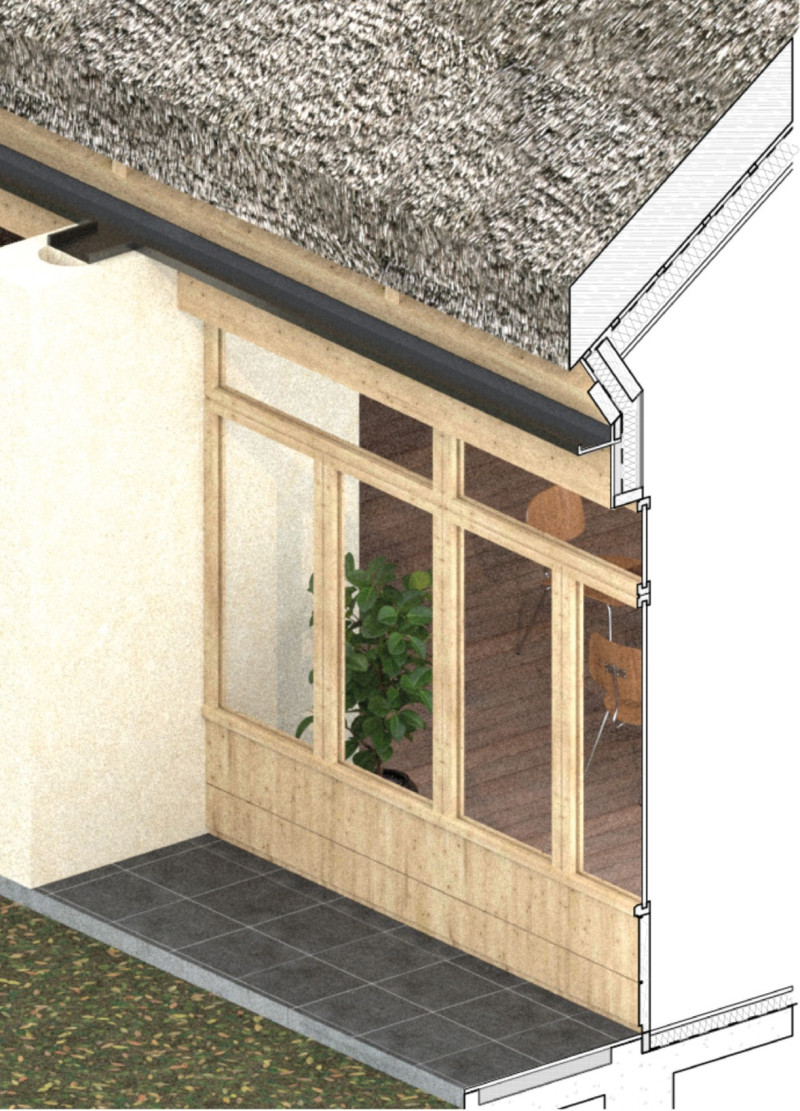5 key facts about this project
The design engages with its natural environment, characterized by a calm lake and surrounding trees. Located on the site of a former barn, the structure connects the built area with the landscape. The concept focuses on creating a balanced interaction between the indoors and outdoors. The outcome is a space that fosters community while allowing for personal moments of solitude.
Spatial Organization
The layout includes two separate dwellings, allowing family members to share common spaces while having private areas. Common rooms are aligned with the trees, encouraging an appreciation of nature. More intimate spaces face the lake, offering a quiet spot for reflection. This arrangement supports a varied experience for residents, addressing both socializing and privacy needs.
Central Workshop
A key feature is the workshop, which lies in the center of the design. It serves as an important gathering place for activities and connections between the families. This space is adaptable, highlighting the project’s intent to support collaborative efforts and shared experiences. The workshop emphasizes a sense of community while accommodating individual activities.
Vernacular Influence
The architectural style draws from local vernacular traditions, using wood structures elevated on solid masonry bases. This choice meets climate demands by ensuring stability and durability while resembling regional building styles. The thatched roof provides effective insulation, reflecting the project’s sustainable focus that reduces energy usage.
Ecological Integration
The design challenges traditional forms by incorporating a visible framework that supports the structure and welcomes local wildlife, such as bats. This element emphasizes a connection to the environment, fostering an ecosystem that exists alongside human life. Walls that frame natural views create distinct atmospheres within the shelter, allowing light to flow in and creating spaces for calm reflection.
The interiors are filled with natural light, which highlights the beauty of the materials and the connection to the landscape. Shadows shift throughout the day, adding to the dynamic experience of living within this thoughtfully designed environment.






















































